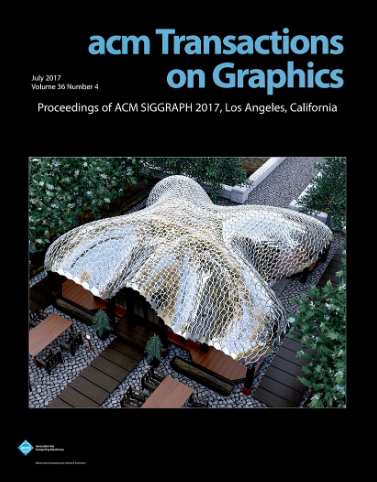PS-CAD: Local Geometry Guidance via Prompting and Selection for CAD Reconstruction
IF 9.5
1区 计算机科学
Q1 COMPUTER SCIENCE, SOFTWARE ENGINEERING
引用次数: 0
Abstract
Reverse engineering CAD models from raw geometry is a classic but challenging research problem. In particular, reconstructing the CAD modeling sequence from point clouds provides great interpretability and convenience for editing. Analyzing previous work, we observed that a CAD modeling sequence represented by tokens and processed by a generative model does not have an immediate geometric interpretation. To improve upon this problem, we introduce geometric guidance into the reconstruction network. Our proposed model, PS-CAD, reconstructs the CAD modeling sequence one step at a time as illustrated in Fig. 1. At each step, we provide three forms of geometric guidance. First, we provide the geometry of surfaces where the current reconstruction differs from the complete model as a point cloud. This helps the framework to focus on regions that still need work. Second, we use geometric analysis to extract a set of planar prompts, that correspond to candidate surfaces where a CAD extrusion step could be started. Third, we present a step-wise sampling to generate multiple complete candidate CAD modeling steps instead of single-tokens without direct geometric interpretation. Our framework has three major components. Geometric guidance computation extracts the first two types of geometric guidance. Single-step reconstruction computes a single candidate CAD modeling step for each provided prompt. Single-step selection selects among the candidate CAD modeling steps. The process continues until the reconstruction is completed. Our quantitative results show a significant improvement across all metrics. For example, on the dataset DeepCAD, PS-CAD improves upon the best published SOTA method by reducing the geometry errors (CD and HD) byPS-CAD:基于提示和选择的CAD重构局部几何引导
基于原始几何图形的逆向工程CAD模型是一个经典但具有挑战性的研究问题。特别是,从点云重建CAD建模序列,为编辑提供了极大的可解释性和方便性。分析之前的工作,我们观察到,由符号表示并由生成模型处理的CAD建模序列不具有直接的几何解释。为了改善这一问题,我们在重构网络中引入了几何制导。我们提出的模型PS-CAD一次一步重建CAD建模序列,如图1所示。在每一步,我们提供三种形式的几何引导。首先,我们提供了当前重建与完整模型不同的曲面的几何形状作为点云。这有助于该框架将重点放在仍需努力的地区。其次,我们使用几何分析来提取一组平面提示符,这些提示符对应于可以开始CAD挤压步骤的候选表面。第三,我们提出了一种逐步采样来生成多个完整的候选CAD建模步骤,而不是没有直接几何解释的单一标记。我们的框架有三个主要组成部分。几何制导计算提取了前两类几何制导。单步重建为每个提供的提示符计算单个候选CAD建模步骤。单步选择在候选CAD建模步骤中进行选择。这个过程一直持续到重建完成。我们的定量结果显示,所有指标都有显著改善。例如,在DeepCAD数据集上,PS-CAD改进了已发表的最佳SOTA方法,将几何误差(CD和HD)减少\(10\% \),结构误差(ECD度量)减少\(13\% \)。
本文章由计算机程序翻译,如有差异,请以英文原文为准。
求助全文
约1分钟内获得全文
求助全文
来源期刊

ACM Transactions on Graphics
工程技术-计算机:软件工程
CiteScore
14.30
自引率
25.80%
发文量
193
审稿时长
12 months
期刊介绍:
ACM Transactions on Graphics (TOG) is a peer-reviewed scientific journal that aims to disseminate the latest findings of note in the field of computer graphics. It has been published since 1982 by the Association for Computing Machinery. Starting in 2003, all papers accepted for presentation at the annual SIGGRAPH conference are printed in a special summer issue of the journal.
 求助内容:
求助内容: 应助结果提醒方式:
应助结果提醒方式:


